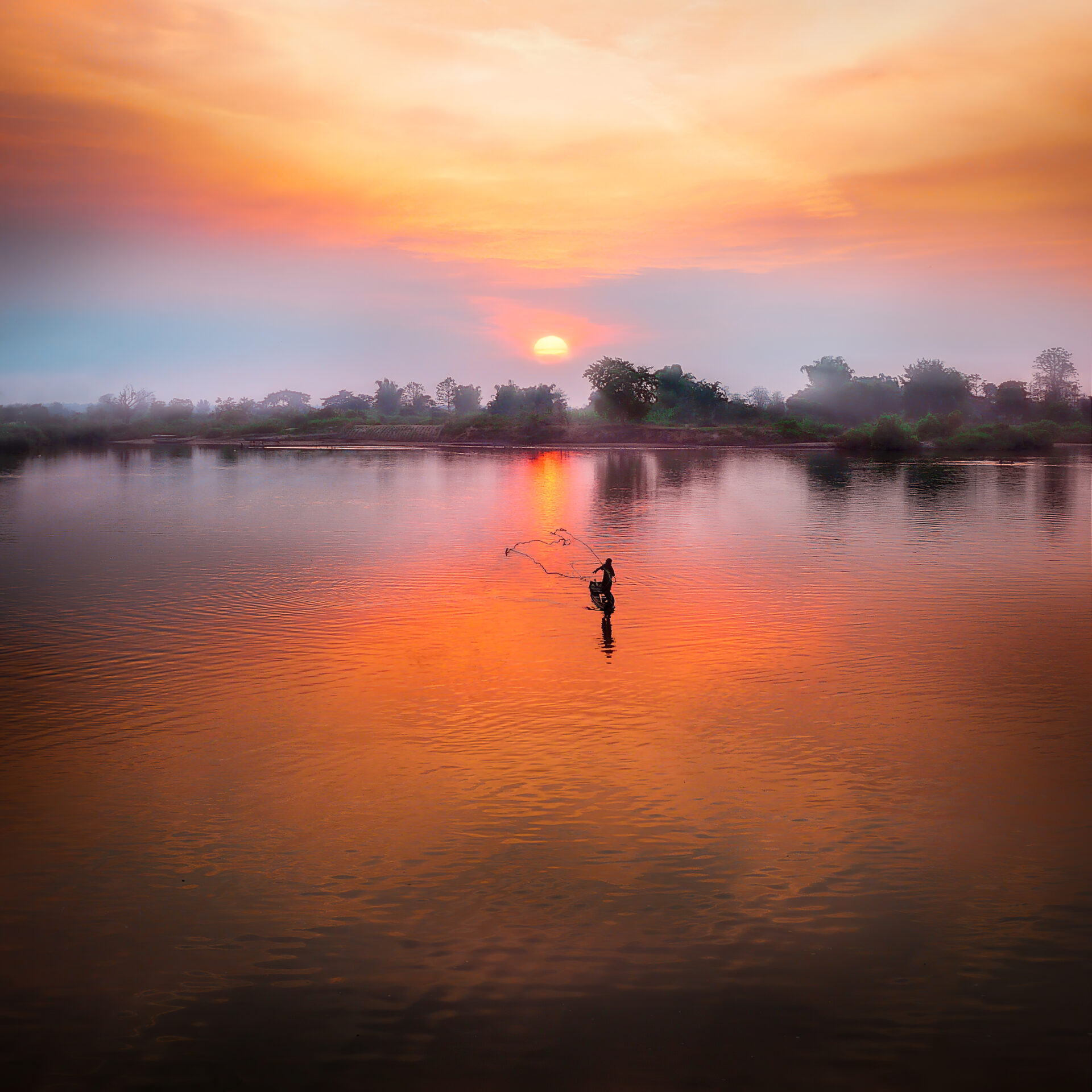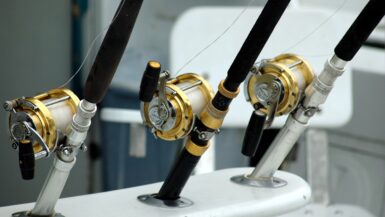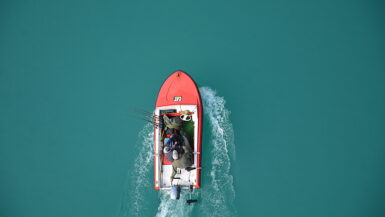Fishing is a beloved recreational activity enjoyed by people all around the world. For many fishing enthusiasts, the beauty of the sport lies in the ability to catch and release a fish without having to kill it. This practice is known as catch-and-release fishing and it is both an ethical and economic way to enjoy the sport while protecting the environment. In this article we’ll explore the various benefits of catch-and-release fishing, from helping to maintain fish populations to conserving resources.
What is Catch-and-Release Fishing?
Catch-and-release fishing is a type of recreational fishing that involves temporarily catching a fish and returning it to the body of water from which it was caught. It is typically practiced as a type of conservation effort to help preserve the population of certain species. The practice is recommended by both professional anglers and conservationists as a way to practice responsible angling.
The Advantages of Catch-and-Release Fishing
The biggest advantage of catch-and-release fishing is the conservation of fish populations. When performed properly, it can help maintain healthy numbers of fish in an aquatic ecosystem. It also helps to protect the genetic diversity of a species by reducing the risk that a single species will be overfished.
In addition, catch-and-release fishing allows anglers to release the fish back into their natural environment without causing them any harm. The fish is not killed, so no fish resources are used up in the process. This way, the fish can be left to grow and reproduce, and future generations of fishermen can continue to enjoy fishing for the same species.
Tips for Safe Catch-and-Release Fishing Practices
In order to maximize the potential benefits of catch-and-release fishing, it is important to practice safe and responsible angling techniques. This means taking the time to properly handle and release the fish, as well as using properly sized tackle so as not to injure them.
In addition, it is important to use natural baits when possible to reduce the amount of non-natural materials being introduced into the water. It is also a good idea to keep a net handy to help unhook fish that have swallowed the bait. Finally, if using a barbless hook, anglers should be extra careful to ensure that the hook does not damage the fish’s mouth or gills.
Conclusion
Catch-and-release fishing is a type of recreational fishing that involves temporarily catching a fish and returning it back to its natural habitat. The practice is beneficial for both anglers and fish populations as it helps protect fish populations while allowing anglers to enjoy fishing responsibly. In order to maximize the potential benefits of this practice, it is important to practice safe and responsible angling techniques, such as using natural baits and properly sized tackle, as well as keeping a net handy to help unhook fish that have swallowed the bait.
Benefits for Fish Populations
Catch-and-release fishing is a conservation practice that can help reduce the pressure on fish populations. By releasing the fish back into the wild, anglers are limiting the amount that can be taken out of the water each day. This helps to ensure the sustainable use of natural resources which benefits both the environment and the fish population.
Minimized Mortality Rates
It is also important to consider the mortality rate of the fish who are caught and released. Most of the fish survive the catch-and-release process, but mortality rates can increase if the fish is handled inappropriately. Fisherman who practice catch-and-release should use the proper techniques, such as using the appropriate tackle, wetting their hands and keeping the fish in the water whenever possible. This will help minimize the mortality rate and ensure the survival of the fish.
Restoring Fish Stock Levels
Catch-and-release fishing can also help in restoring fish stock levels in depleted or overexploited areas. By releasing the fish, anglers can help to replenish the fish stock, providing a more sustainable and healthy environment for the fish. This can help to increase the abundance of fish in the area and ensure that they stay healthy and thrive over time.
Increased Fishing Opportunities
Catch-and-release fishing also offers an additional benefit to anglers. By releasing the fish, anglers will have more opportunities to fish in the same area. This will allow them to enjoy the sport longer and experience more of what the environment has to offer.
Long-Term Benefits
Finally, catch-and-release fishing also has long-term benefits for both fish populations and anglers. By reducing pressure on fish populations, anglers can help ensure the sustainable use of natural resources which will provide long-term benefits for the environment and the fish. At the same time, anglers will enjoy increased fishing opportunities and access to more fish in the same area. This will help to ensure that the fishing experience is enjoyable for everyone.
Benefits for Fishermen
Catch-and-release fishing provides fishermen with increased opportunities to enjoy the sport without depleting the local population of fish. Through this practice, the populations of fish are able to replenish quickly, allowing fishermen to enjoy more frequent catches. This also helps to keep the overall ecosystem in balance, as the fish can migrate freely and reproduce at higher rates.
Economical Benefits
Catch-and-release fishing is beneficial to local economies. Tourists are drawn to areas where fishing is a popular activity, and anglers visiting the area often spend money in nearby restaurants, shops, and hotels. This economic boost is beneficial for the local communities, especially in rural areas.
Ecological Benefits
Catch-and-release fishing is beneficial to the environment as well. By releasing fish back into the water, anglers help to maintain healthy fish populations and preserve the balance of the aquatic ecosystems. This is especially important in areas where the fish population is already depleted due to overfishing or other environmental pressures.
Reduced Stress for Fish
Catch-and-release fishing is also beneficial to the fish themselves – especially during the spawning season. Keeping a fish out of the water for a prolonged period of time can be stressful and cause injury or even death, so releasing the fish quickly helps to ensure that they remain healthy and can reproduce. Releasing the fish also helps to reduce their stress and maintain the health of the population.
Enhanced Experiences
Finally, catch-and-release fishing can provide anglers with a more satisfying and rewarding experience. Watching a fish swim away after being caught is a rewarding experience, and many anglers enjoy the challenge of trying to hook a particularly elusive fish. This type of fishing also provides an opportunity for anglers to learn more about the fish they are targeting, as they can observe them while they are being released.
Equipment Needed for Catch-and-Release Fishing
Catch-and-release fishing is a sustainable and humane practice of releasing a fish after it has been caught. Aside from being beneficial to the environment, it’s also a great way to enjoy the sport of fishing without having to take home a haul of fish. In order to practice catch-and-release fishing, you’ll need the right equipment.
Hook Removal Tool
The first essential piece of gear you need is a hook removal tool. It’s important to use a hook removal tool so that you don’t damage the fish while you’re trying to remove the hook. A hook removal tool is designed to help you remove the hook quickly and efficiently. As a result, the fish will suffer minimal damage.
Fish-Friendly Landing Net
The next piece of equipment is a fish-friendly landing net. Traditional nylon nets can cause damage to a fish’s delicate scales and fins. But a fish-friendly, rubber-coated landing net will minimize the trauma the fish experiences. The rubber coating also prevents the hook from snagging, making it easier for you to remove the hook.
Fish Gripper
When it’s time to release the fish, you’ll need a fish gripper to hold the fish securely. Using a fish gripper allows you to handle the fish with care and keeps your hands free of the hook. You’ll also be able to safely hold the fish while you measure and record it.
Pliers
Depending on the type of hook, you might need pliers to help you remove the hook. Pliers can be used to help straighten out a hook that has become lodged in the fish’s mouth. It’s important to make sure that the hook is out before you release the fish.
Protective Gloves
Protective gloves are also a good idea when practicing catch-and-release fishing. Fish can be slippery and it’s easy to drop them. Wearing gloves also keeps your hands free of the hook.
Catch-and-release fishing is a great way to enjoy the sport of fishing while preserving the natural environment. In order to practice catch-and-release fishing, you need the right equipment, which includes a hook removal tool, a fish-friendly landing net, a fish gripper, pliers, and protective gloves. With the right gear and a bit of patience, you can practice catch-and-release fishing and reap the benefits.
Tips for Successful Catch-and-Release Fishing
Catch-and-release fishing is an ethical and sustainable way to enjoy the sport without taking fish from the environment. To make sure your catch-and-release fishing trips are effective and successful, there are some essential tips you should know beforehand.
Prepare the Proper Tools
Before heading out on a fishing trip, make sure you have all the rods, reels, lures, bait and tackle you will need. It is also a good idea to have a pair of pliers and a net on hand to help you safely release the fish unharmed.
Use the Right Method
Using the right technique when catching and releasing the fish is important to ensuring their safety. Lightweight tackle should be used to minimize the stress placed on the fish. When you catch the fish, it should be handled with wet hands, supported in the water and quickly released. When possible, try to avoid touching the fish or removing it from the water.
Choose the Right Environment
Picking the right environment is also key to successful catch-and-release fishing. Find a body of water with clear and healthy conditions and avoid areas that are polluted or overly crowded. Make sure the fish are able to swim freely and find their way back to their natural environment.
Follow Proper Regulations
Whenever possible, you should adhere to all local, state and federal regulations when it comes to catch-and-release fishing. Regulations will vary from one location to another, so make sure to familiarize yourself with the rules and policies before you head out to fish.
Show Respect for the Fish
Above all else, make sure to show respect for the fish and the environment. Practice catch-and-release fishing in a manner that does not disrupt the natural habitat. This includes refraining from harassing or stressing the fish and disposing of trash and debris properly.
By following these tips, you can maximize the success of your catch-and-release fishing trips while helping to maintain the overall health of the fish and the environment.
Environmental Impact
Catch-and-release fishing has been found to have many benefits, both for the environment and for the anglers themselves. It helps to promote sustainability in fish populations by allowing them to reproduce, as well as helping to conserve sensitive species. Beyond that, it also ensures that anglers can continue to enjoy the sport without having to worry about overfishing. In addition, catch-and-release fishing also has an impact on reducing pollutants, as fewer fish are put in the food chain, and are instead returned to the water where they may continue to feed and grow. All in all, catch-and-release fishing is an important part of preserving our aquatic ecosystems and allowing future generations to enjoy the sport.





Leave a reply